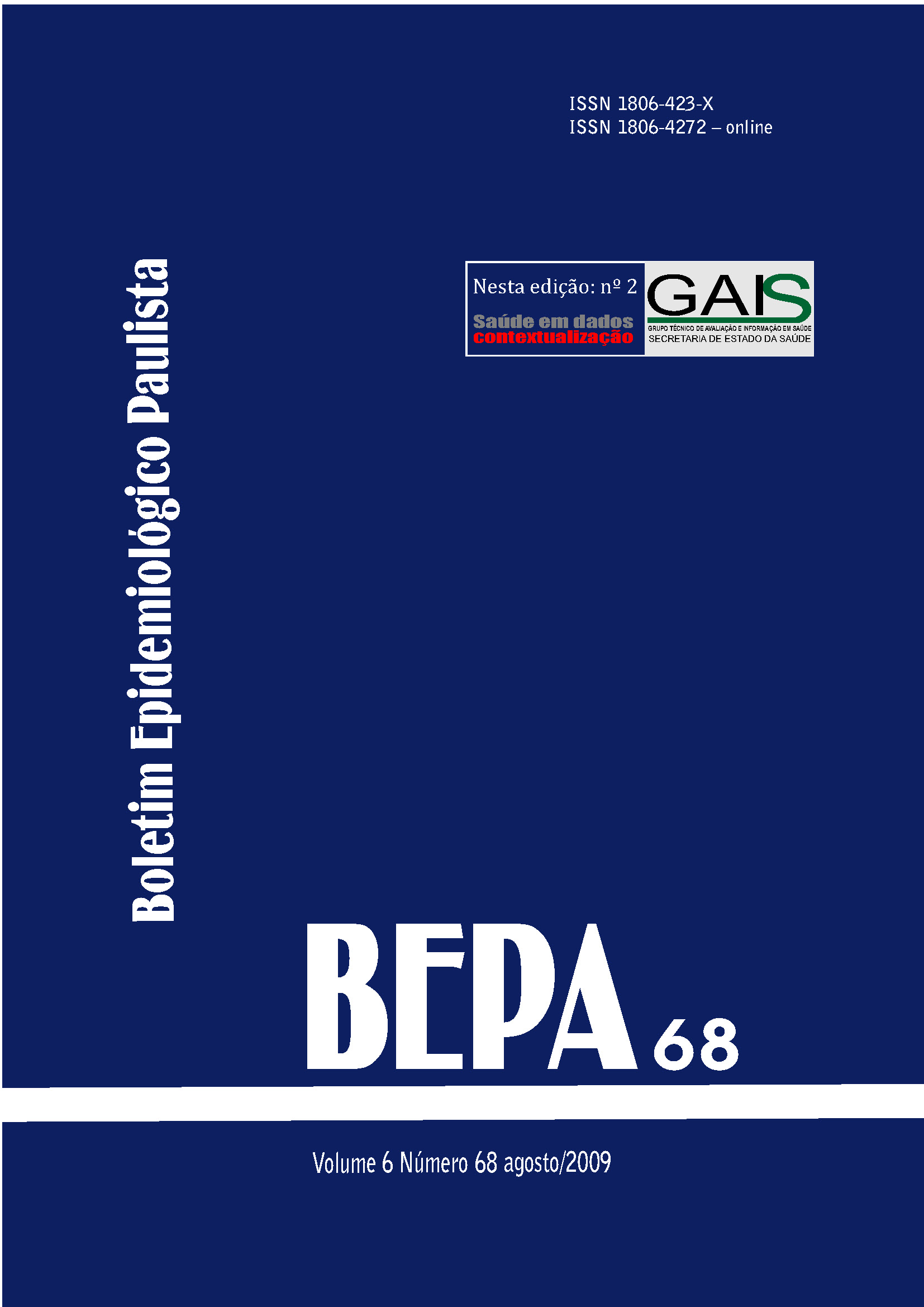Abstract
This study evaluated the ability of PCR to diagnose VL and distinguish L. (L.) chagasi from other Leishmania species. Samples from 114 dogs were divided into two groups: 44 symptomatic and 70 asymptomatic. They were assayed by parasitological methods (culture and microscopic examination) and PCR to L. (L.) chagasi, L. (V.) braziliensis; and in some cases, Leishmania spp. Parasitological tests and PCR-L. chagasi were concordant in 105 samples (92%). VL was confirmed in 49 dogs, while 56 had negative results. Of the 114 samples, 9 had discordant results but were further tested by PCR-Leishmania spp with positive results. VL was also confirmed in 4 dogs having negative parasitological tests and positive PCR-L. chagasi. Consequently, this PCR was positive for 100% (53/49) of dogs with parasites detected in parasitological tests. Also, PCR demonstrated high specificity detecting 61 dogs negative. Leishmania infection was negative in 56 dogs, and 5 with positive culture and PCR-Leishmania spp had CL since they were positive in PCR-L. braziliensis. This study shows the importance of including PCR in diagnosis of leishmaniases by differential diagnosis contributing to the surveillance and control of VL programs.
References
Grimaldi G, Tesh RB. Leishmaniasis of the New Word: current concepts and implications for the future research. Clin Microbiol Rev. 1993; 6:230-50.
Lainson R, Shaw JJ. New World leishmaniasis. The neotropical Leishmania species. In: Collier L, Balows A, Sussman M (eds). Topley & Wilson's microbiology and microbial infectious diseases. 9 ed. Londres: Arnold; 1998. v. 5, p. 241-66.
World Heath Organization - WHO. Division of control of tropical disease. Leishmaniasis control [acesso em junho 2007]. Disponível em: http://www.who.int/tdr/diseases/ leish/diseaseinfo.htm.
Degrave W, Fernandes O, Campebell D, Bozza M, Lopes U. Use of molecular probes and PCR for detection and typing of Leishmania – A mini review. Mem Inst Oswaldo Cruz. 1994;89:463-9.
Evans TG, Teixeira MJ, Mcauliffe IT, Vasconcelos I, Vasconcelos AW, Sousa Ade A, Lima JW. et al. Epidemiology of visceral Leishmaniasis in Northeast Brazilian. J Inf Dis. 1992;166:1124-32.
Ministério da Saúde - MS. Manual de vigilância e controle da leishmaniose visceral, Brasília,DF,2006.http:// portal.saude.gov.br/portal/saude/ Gestor/area.cfm?id_area=1133
Lindoso JAL, Goto H. Leishmaniose visceral: situação atual e perspectivas futuras. BEPA [periódico na internet]. 2006 fev 26:7-11. Disponível em: http:// www.cve.saude.sp.gov.br/agencia/ bepa26_lva.htm.
Secretaria de Estado da Saúde (São Paulo). Centro de Vigilância Epidemiológica. II Informe Técnico – Leishmaniose visceral americana [informe na internet]. 2006, 48 pp. Disponível em: ftp:// ftp.cve.saude.sp.gov.br/doc_tec/zoo/ lva06_manual.pdf.
Camargo-Neves VLF, Grupo de Estudos em Leishmanioses. Classificação epidemiológica dos municípios para a leishmaniose visceral Americana. Bepa [boletim na internet]. 2007 marc 4(39):27-39. Disponível em: http:// www.cve.saude.sp.gov.br/agencia/ bepa39_lva.htm.
Ashford DA, Bozza M, Freire M, Miranda JC, Sherlock I, Eulalio C, et al. Comparison of the polymerase chain reaction and serology for detection of canine visceral leishmaniasis. Am J Trop Med Hyg. 1995;53:251-5.
Berrahal F, Mary C, Roze M, Berenger A, Escoffier K, Lamouroux D, Dunan S. Canine Leishmaniasis: identification of asymptomatic carriers by polymerase chain reaction and immunoblotting. Am J Trop Med Hyg. 1996;55:273-7.
Paula AA, Silva AV M, Fernandes O, Jansen AM. The use of immunoblot analysis in the diagnosis of canine visceral leishmaniasis in an endemic area of Rio de Janeiro. J Parasitol. 2003;89:832-6.
Schallig HDFH, Oskam L. Molecular biological applications in the diagnosis and control of leishmaniasis and parasite identification. Trop Med Intern Health. 2002;7:641–51.
Cupolillo E, Grimald G e Momen H. A general classification of New Word Leishmania using numerical zymotaxonomy. Am J Trop Med Hyg.1994;50:296-312.
Grimaldi G, McMohon-Pratt D. Monoclonal antibodies for.the identification of New world Leishmania species. Mem Inst Oswaldo Cruz R Janeiro. 1996;91:37-42.
Marfurt J, Nasereddin A, Niederwieser I, Jaffe CL, Beck HP, Felger I. Identification and differentiation of Leishmania species in clinical samples by PCR amplification of the miniexon sequence and subsequent restriction fragment length polymorphism analysis. J Clin Microbiol. 2003;41:3147-53.
Rioux JA, Lanotte G, Serres E, Pratlong F, Bastien P, Perieres J. Taxonomy of Leishmania. Use of isoenzymes. Suggestions for a new classification. Ann Parasitol Hum Comp. 1990;65:111-25.
Volpini AC, Passos VM, Oliveira GC, Romanha AJ. PCR-RFLP to identify Leishamania (Viannia) braziliensis and L. (Leishmania) amazonensis causing american cutaneous leishmaniasis. Acta Tropica. 2003;90:31-7.
Barker DC. Kinetoplast minicircle sequence database [acesso em junho 2007]. Disponível em: http://www.ebi.ac.uk/ parasites/kDNA/Source.htm.
Noyes HA, Reyburn H, Baley JW, Smith D. Leishmania kinetoplast minicircle classes directly from clinical samples and its application to the study of the epidemiology of Leishmania tropica in Pakistan. J Clin Micobiol. 1998;36:2877-81.
Fernandes O, Bozza M, Pascale JM, de Miranda AB, Lopes UG, Degrave WM. An oligonucleotide probe derived from kDNA minirepeats is specific for Leishmania (Viannia). Mem Inst Oswaldo Cruz. 1996;91:279-84.
Fu G, Kolesnikov AA. Leishmania gymnodactyli and Leishmania infantum minicircles contain the same guide RNA genes as do minicircles of Leishmania tarentolae. Mol Biochem Parasitol. 1994;67:171-4.
Ravel S, Cuny G, Reynes J, Veas F. A highly sensitive and rapid procedure for direct PCR detection of Leishmania infantum within human peripheral blood mononuclear cells. Acta Trop. 1995;59:187-96.
Mauricio IL, Yeo M, Baghaei M M, Doto D, Pratlong F, Zemanova E, et al. Towards multilocus sequence typing of the Leishmania donovani complex: resolving genotypes and haplotypes for five polymorphic metabolic enzymes (ASAT, GPI, NH1, NH2, PGD). Int J Parasitol. 2006;36;757-69.
Lachaud L, Marchergui-Hammami S, Chabbert E, Dereure J, Dedet JP, Bastien P. Comparison of six PCR methods using peripheral blood for detection of canine visceral leishmaniasis. J Clin Microbiol. 2002;40:210-5.
Passos VM, Fernandes O, Lacerda PA, Volpini AC, Gontijo CM, Degrave WM, Romanha AJ. Leishmania (Viannia) braziliensis is the predominant species infecting patients with American cutaneous leishmaniasis in the state of Minas Gerais, Southeast Brazil. Acta Trop. 1999;72:251-8.
Harris E, Kropp G, Belli A, Rodriguez B e Agabian N, Single-step multiplex PCR assay for characterization of New World Leishmania complexes. J Clin Microbiol. 1998;36: 1989-95.
Gomes AH, Ferreira IM, Lima ML et al. PCR identification of Leishmania in diagnosis and control of canine Leishmaniasis. Vet Parasitol. 2007;144:234-41.

This work is licensed under a Creative Commons Attribution 4.0 International License.
Copyright (c) 2009 Vera Lucia Pereira-Chioccola
